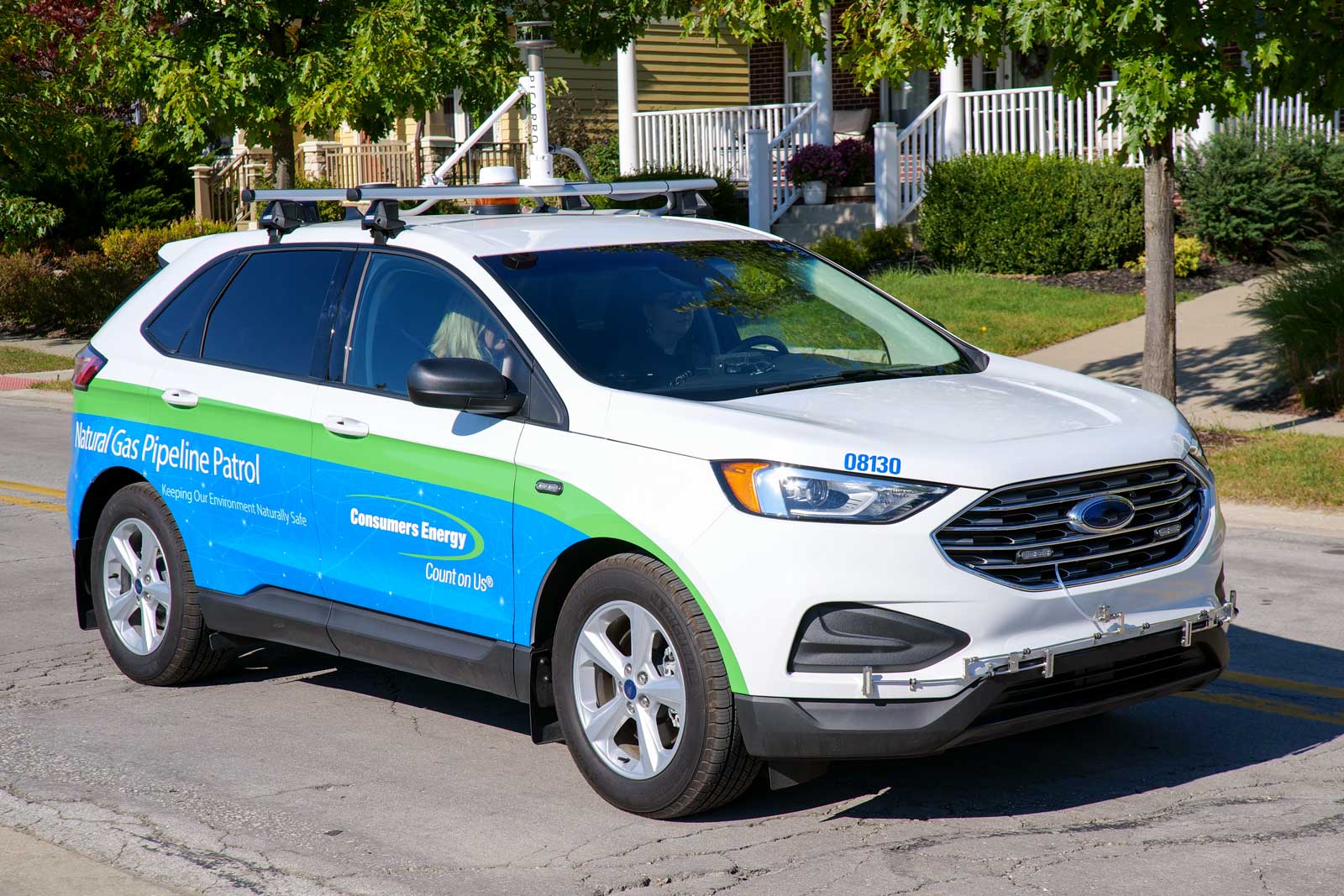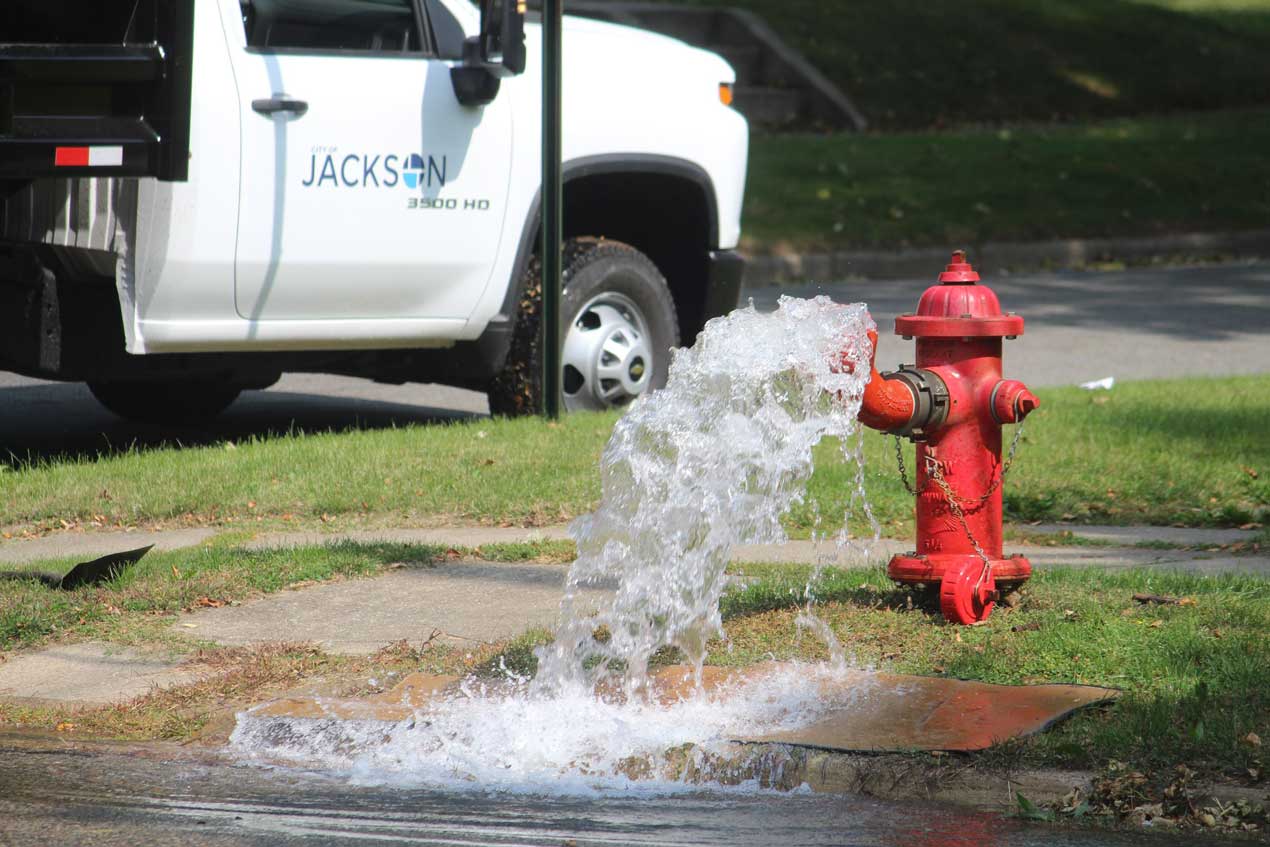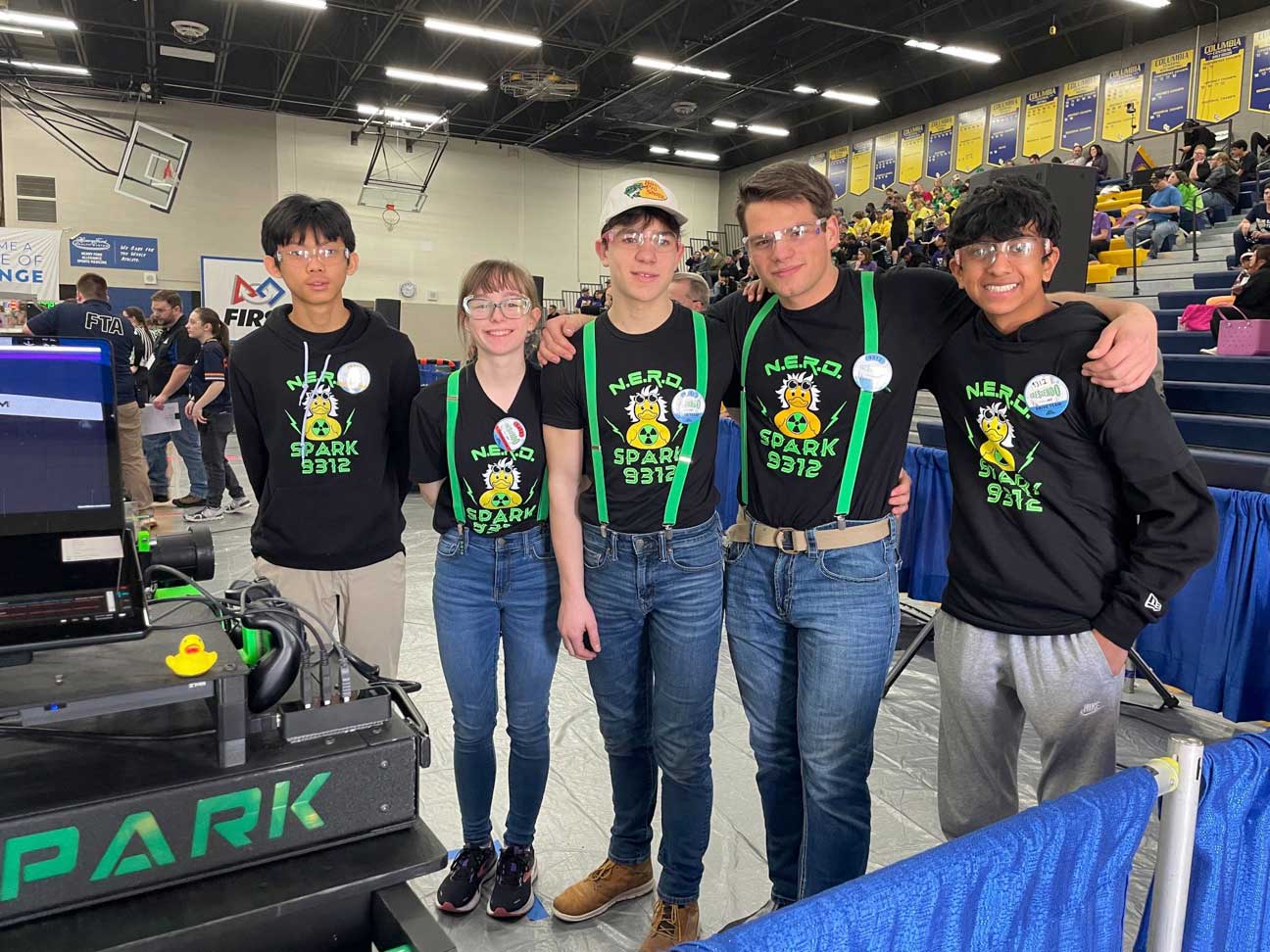
One of the two new Ford Edge SUVs equipped with natural gas leak detection systems. Photo courtesy Consumers Energy.
(November 18, 2021 12;02 PM) Consumers Energy today announced the launch of mobile natural gas leak detection vehicles designed to track down methane gas leaks to help keep customers and communities safe.
This month, the company is debuting two Ford Edge SUVs equipped with sensitive state-of-the-art mobile natural gas leak detection systems from Silicon Valley-based Picarro Inc. The rolling labs can gather and instantly analyze methane, wind, atmospheric and GPS data to find natural gas leaks and calculate their risks.
The new vehicles will help Consumers Energy prioritize leaks in natural gas pipes faster and more accurately and improve response to storms and natural disasters. The $4 million, five-year investment is part of the company’s plan to achieve net zero methane emissions by 2030.
“This pilot project is another way we’re innovating to protect the planet and lead Michigan’s clean energy transformation,” said Greg Salisbury, vice president of gas engineering and supply. “We’re investing to make infrastructure and processes safer while reducing our environmental footprint.”
The rolling labs are outfitted with Picarro technology, a combination of hardware, software and data analytics that’s one thousand times more sensitive than the process currently used to survey Consumers Energy’s nearly 28,000-mile distribution network.
The vehicles will collect and analyze methane data as they roll down the road. They can patrol geographic areas quickly, scanning for potential trouble spots and providing real-time information to identify leaks and target areas for further investigation.
“Picarro-equipped vehicles have collected and analyzed billions of methane data points, across millions of miles, for utilities worldwide,” said Vince Gaeto, vice president, sales and marketing, energy at Picarro. “We’re pleased Consumers Energy has selected this proven technology to help achieve their ambitious methane emissions reduction goals.”
The system on each vehicle includes:
- A parts-per-billion sensitivity gas analyzer measuring atmospheric gas composition and other tracers such as ethane.
- An anemometer mounted on a mast for detecting wind speed, direction and wind variability.
- Two antennas on the vehicle roof, one for the 4G wireless connectivity and one for sub-meter GPS vehicle positioning.
- A 4G wireless router enabling the internet connection and data transmission to and from the Picarro Cloud and Wi-Fi connection to the in-vehicle tablet.
In a news release, Consumers Energy said methane emissions have been cut by 15 percent, primarily by replacing aging pipeline and outdated infrastructure.













